9/11 and the Damage Done
On the day the towers fell, furies flew out of the hole in the ground and like all restless spirits, they headed west I did not realize it at the time, of course, but did have the sense a few days after the dust began to settle at Ground Zero that things had shifted, a feeling that we all had, as if the world itself had gone off its axis.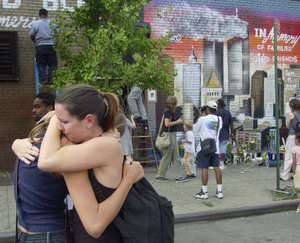
On the day the towers fell, furies flew out of the hole in the ground and like all restless spirits, they headed west. I did not realize it at the time, of course, but did have the sense a few days after the dust began to settle at Ground Zero that things had shifted, a feeling that we all had, as if the world itself had gone off its axis.
I happened to be in New York that day, and why I was there had much to do with what was going on in the country in the months before the attack. I was on assignment for Rolling Stone, asked many weeks before to write about the Robert Blake case. You remember that, right? It was the one in which Blake, the accomplished and famous actor, was on trial for allegedly killing his wife Bonny Bakley, a most peculiar character who scammed and conned her way out of a trailer park and into certain echelons of Hollywood. Along the way she got knocked up and ultimately had Blake’s baby.
In the months leading up to 9/11, America had been in the grips of what may be the most intense celebrity mania we have yet experienced. Day after day there was chatter and talk and screaming about the banal and talentless Britney Spears; the coverage had cleaned the slate — there was no mention of anything else, certainly not another kind of chatter that was being picked up by intelligence agencies everywhere — although there was an occasional time out for discussion of another kind of doom — shark attacks! The summer of 2001 apparently had the highest number of shark attacks ever, or at least the most reported attacks, and everybody was supposed to get out of the water now!
I should mention at this point that I generally steer clear of celebrity coverage. It’s just not what I write. But to me, the Blake story was different; it had certain elements that appealed to me, and I agreed to take on this assignment, thus adding to the avalanche of news and commentary about famous people that is continually being produced.
Which brings me to why I was in New York on 9/11. I had been waiting for weeks to meet with Margerry Bakley, Bonny’s sister; she lived in New Jersey and had agreed to talk with me about her sister’s life. But she had an exclusive deal with a tabloid and was not permitted to speak with representatives of any other publication until the agreement expired. That time frame was September. I had originally planned to meet with her later in the month, after a hiking trip to the Grand Canyon that I had planned months in advance. But I happened to have a premonition that was so powerful it led me to cancel my trip and head as soon as I could to New York. Something told me that I might never again see my mother or other family members, who lived there. My feeling didn’t indicate anything about New York City specifically, but I felt queasy and that something was out of kilter and I knew I had to get to Manhattan.
So on 9/10, I flew from Los Angeles, arriving early on the morning of 9/11, and headed uptown to stay with my friend Pamela Berkeley, a fine artist who had spent many years painting New York in its many aspects from rooftops and elsewhere, adding to her body of landscape work. My plan was to check in with my mother later that day. I had also made arrangements to meet with Margerry Bakley on 9/12, across the Hudson River at a diner in New Jersey, near her home.
My flight arrived on time, early on the morning of 9/11, around 3 or 4 a.m. I picked up my rental car and drove from JFK airport to Pamela’s apartment on 108th Street between Broadway and Columbus, on the Upper West Side of Manhattan. We hadn’t seen each other in a few years and, over a bottle of wine, settled into a conversation about old times, catching up on which old friends in our circle were living where and doing what and how we ourselves were faring at the moment. Around sunrise, I wandered off to the guest room and fell asleep. A little while later, Pamela came in and tried to wake me out of my wine-infused, jet-lagged condition.
“Deanne, get up,” she said, “something really weird just happened.” I was wearing earplugs and barely roused and she continued. “A plane just flew into the World Trade Center. It’s all over the news.”
I mumbled something about why this was no big deal, reminding her that some time ago, a small plane had flown into the Empire State Building and that was an accident. She left and I went back to sleep, but 10 minutes later, she returned and insisted that I get up, shaking me to make sure I got the message.
“It’s really bad,” she said. “Come in and take a look.”
So I headed to the living room, and joined Pamela and her daughter Eleanor, watching what had just happened on television: Another plane had hit the second tower and a terrorist attack was apparently under way.I immediately called my mother, who lived on the Lower East Side, not that far from the towers. On the news, the scenario was spiraling out of control. The towers were in flames, workers were jumping out of windows, and mobs of stunned people were pouring out of downtown Manhattan, heading uptown or across the Brooklyn Bridge in flight. I couldn’t get through to my mother, nor could I reach my sister; as I later learned, she had actually seen the second plane crash from a nearby vantage point. Pamela was having trouble reaching her other daughter, Tanyth, a photographer who had also been documenting urban life in unexpected ways, and who was living in Brooklyn. I kept trying to call my mother and the line was busy; finally I heard from her in a call that was filled with static. She was still in her apartment, she said, and had opened her door to businessmen with briefcases who had been buzzing doorbells as they ran up the streets from the financial district, trying to find a working phone so they could contact their families and let them know they were all right.
“It looks like Hiroshima down here,” she said. “But I’m OK. Everyone’s covered in ashes.”
My mother, a lifelong sculptor, is the kind of person for whom Manhattan was cooked up — open 24 hours, a haven for creative people who would have suffocated had they been forced to remain in their various hometowns, and filled with the best art and music and theater and libraries and cuisine and minds that the world has to offer. Not to mention the chance encounters to be had on the streets or in one-of-a-kind card shops or walk-in beauty parlors at any given time — here pulsed life and here on these byways my mother had found true North since fleeing Ohio in the 1970s and heading for the safe zone that renegades had been carving out since the days of the American Revolution.
We made plans to see each other later that day or the next; we didn’t know exactly where and when because the subway lines had been shut down along with other forms of public transportation, but in any case we figured that either I’d walk downtown to her place, or she’d walk uptown, depending on the street situation. At the moment, it was a good idea to stay inside — or at least where you were, provided you were in a safe place. Wanting to see what we could notice from the top of Pamela’s building, we climbed up several flights and through a skylight that led to the roof. It was a beautiful and classic fall day in Manhattan — clear blue skies with a hint of crispness in the air, promising the delights of the harvest season. We looked south toward downtown, but couldn’t see smoke in that direction. But on the breezes that were swirling up that way from the vicinity of the Statue of Liberty and beyond, there was a hint of the calamity that was unfolding, an acrid note of jet fuel and smoldering elements — metal mostly — and within a few days, the disturbing scent was wafting over the entire island of Manhattan.
Throughout that morning, weirdly enough, I had also been trying to contact Margerry Bakley. Obviously our meeting would have to be postponed. The bridges leading in and out of Manhattan were all closed, although that was certainly not the only reason to cancel. I was sure she knew that I would not be showing up on the following day for our designated lunch; however, it was just good manners to try to reach someone with whom you had an appointment that you could not make, even if the world was ending. That’s what seems to happen in a situation like that, or at least it did to me, amid the shock; routine takes over, providing some semblance of continuity and connection. But her line was busy for hours so I just figured that if the world lasted beyond that day, I’d try calling again at some other point.
A couple of days later, I also contacted my editor at Rolling Stone; we too had a meeting scheduled for later that week. The plan was to talk about the Robert Blake story and catch up about other things as well, but of course that now seemed absurd — along with just about anything else that may have been in the works, for by then everything had come to a total halt, as citizens everywhere grappled with the nature and reality of what just happened.
“I was walking my son to school,” Will Dana said when I reached him and we began talking about the moment of impact. “There was a very low-flying 747 right above me on Fifth Avenue. I looked up and saw the rivets. That’s how close the plane was.”
Our conversation continued for a few more minutes and then Will said that our meeting was still scheduled; Rolling Stone was planning a commemorative issue and did I have any ideas? As it happened, a photograph of Yasser Arafat giving blood had gone out on the wires; the donation was for anyone at Ground Zero who might need it in the immediate aftermath of the attack. Of course there were no survivors, but since the moment that the photo appeared, I had been thinking about it. Yasser Arafat? I thought. Was it a publicity stunt? Who would want his blood? And who, at death’s door, wouldn’t? It was a strange gesture, and one that I couldn’t shake. Soon, after mulling it over for days, I wrote about it.In the immediate aftermath of 9/11, people began gathering at Pamela’s apartment, and we all watched the towers topple and burn, and then remained in front of the television as there came announcement after announcement with more stunning news: The Saudi Arabians were behind the attack; suicide hijackers had trained in the United States; Osama bin Laden’s relatives had been flown out of the country even though all planes had been grounded.
At some point during the first day or two that followed the incident, I was consumed with the most serious meat craving that I had ever had in my life, and so, as it turned out, was Pamela. We decided it was time to go out for food. We began walking downtown, to see for ourselves what was going on in that part of town, planning to stop and have a meal along the way. As we wended our way south, there were vendors selling patriotic items at various street corners. We stopped and purchased American flag bandannas and some other items, wrapping the kerchiefs around our heads and continuing on. Clearly the lines had been drawn; we were on a team and we knew what it was, now more than ever before. The feeling was enforced as we noticed the many fliers posted on lampposts along the avenues and outside every subway entrance that we passed. “Have you seen this person?” each one said, with a photograph of a person who had been missing since the attack, many of them last known to have been heading to work in the twin towers. Each flier had contact information for the vanished person, and all over town, these disappeared were calling out from walls and doorways as search and rescue teams combed through the burning rubble downtown.
There were few restaurants open as we walked southward. Having lived in Chelsea many years before, I knew of a decent restaurant near Gramercy Park, and that’s where we headed; it had good burgers and was never closed. Sure enough, it was open; in fact, it was mobbed. We sat down and ordered burgers — rare, for me, not my typical preference. I usually liked mine well-done, but I hardly ever ate burgers anyway, not in restaurants for sure, unless the meat was organic. On this day, I didn’t care where the meat came from; I wanted it red and I wanted it now.
“Wow,” the waitress remarked as she took our order. “Everyone’s coming in and ordering burgers. I’ve never seen anything like it.”
I realized that war fever had overtaken the city, jacking up the appetite for survival. Whether we knew it or not, we were ready to count coup; we all wanted blood.
Sometime later — after the bridges and tunnels reopened and commerce recommenced — I found myself heading across the George Washington Bridge for my appointment with Margerry Bakley. At some point, I was told, the article would be running; after all, the wheel turns again and life goes on. From inside the booth at the Jersey diner where we were meeting, I could hear the bells tolling across the Hudson in the vicinity of the collapsed towers. Although comedians had proclaimed that 9/11 signaled the death of irony, the moment could not have been more ironic — or paradoxical — or just plain weird.
Margerry spun out one of the saddest stories I have ever heard. A celebrity-obsessed and impoverished grandmother raises a girl in a trailer park, passing on an unusual legacy — an infatuation with the actor Robert Blake. “Maybe you’ll meet him some day,” the subtext of her desire whispers. “Maybe you too will be somebody.” One day the long and winding road led Bonny Bakley to exactly that finale. As it happened, Blake too had come from poor relations, pressed into service during the Depression, literally singing for the family’s supper as a child actor. As he grew older, he continued to work in Hollywood, becoming famous for his performances in fine films such as “In Cold Blood” and “Tell Them Willie Boy Is Here.” At some point his star began to wane; he wound up on the wasteland of television, although still had countless fans. It was after the series “Baretta” had been canceled that Bakley crossed his path. Later, they married and she was killed. Strangely, Bakley had been obsessed with “Sunset Boulevard,” the classic film in which aging movie queen Norma Desmond tries to make a comeback, hiring a writer to pen a script, enticing him as a lover in the process. When things fall apart, she shoots him. As he lies dead in the swimming pool at her crumbling mansion, he narrates the tale. Bakley often watched the film, doing so shortly before she was killed.
“I wonder what it feels like to get shot in the head,” she told her sister before her death, alluding to the film. She had entered the movie long ago, and in her mind was living, and ultimately, dying in Hollywood.
“Go on about your business,” George Bush had stated after 9/11. “Go shopping.”
It was a disturbing statement coming from the president of the United States, the most powerful man in the world, and as I sat in the diner and learned the strange tale of Bonny Bakley, the problem that had consumed the country couldn’t have been more apparent. Celebrity worship — and the idea of famous people as saviors — had been going on for decades; literally, they were a connection to immortality, as close as someone like Bakely would ever get.
Yet now our president was amping up the stakes, inadvertently I’m sure, telling us to resume consuming, buy more stuff, get things, move up in the world, make yourself the object of envy, live the dream, don’t you wanna be like all of the other people who have expensive items?Of all the blown moments, or to torque out some baseball parlance, “blown saves,” the president could have turned it all around in that speech at Ground Zero. Instead of telling us to go shopping, he could have advised us, for instance, to read the Constitution, read the Bill of Rights, read about George Washington and Susan B. Anthony and Crazy Horse, visit the Grand Canyon or the prairie or the Great Lakes, see the natural wonders that fuel our dream of self, find out what this country is really about, understand what’s at stake should America succumb to a fatal blow and become the beacon that burns no longer. But of course that’s not what happened, and as I realized that day in the diner, Bonny Bakley was merely the most desperate spawn of a nation that had been shopping for a very long time.
In the months and first few years after 9/11, the condition that the country was mired in on the day the planes flew into our homeland became only more aggravated. People of all persuasions went on a spending spree facilitated by banks and brokers, buying up houses for nothing down until it all collapsed and the country was on the hook for billions of dollars. Now we must factor in the trillions that have been spent on the wars that began in response to what happened on that September day 10 years ago — vast sums of money never to be recovered and roughly equivalent to the amount that it would take to get America back to sea level.
But the consequences of 9/11 go well beyond money; the country is not just broke, but bleeding. Thousands of men and women have died in military service to this nation, and the war against terrorism — the longest one in American history — shows no sign of ending. Others who have served have come home and killed themselves; they too must be counted.
One of the strangest responses to 9/11 is the 9/11 truth movement, a strange point of convergence of the far left and far right, involving many people of all occupations, educational levels and social classes who believe various conspiracy theories about what happened on that day. Some say it was an inside job involving the U.S. government; others still profess that planes did not actually fly into the Pentagon or the ground in Pennsylvania, despite video footage that suggests otherwise and people who were on those flights, never to be seen again.
There are always people who don’t believe that major events have happened; for instance, some among us believe that the moon walk — Neil Armstrong’s, not Michael Jackson’s — was a hoax. Yet the problem with such theories is that they jack up the paranoid, stoking fires that can sometimes burn out of control.
Take the case of Jared Lee Loughner, the Tucson fellow who tried to assassinate Rep. Gabrielle Giffords outside a Safeway as she talked to constituents, seriously injuring her with a shot to the head, and killing and wounding others who were in line to see her. Arizona is one of the places where the furies of 9/11 have landed, planting themselves in the shallow sands, stirred up when the winds shift, riling passions and causing all manner of upheaval and mayhem. According to a friend, Loughner believed that the American government carried out the attack on 9/11, and at a town hall hosted by Giffords in 2007 that he attended, he may have asked Giffords about the official story. Others who questioned it had reportedly asked Giffords about the same thing in hostile encounters outside her office. Loughner may have been angered by her response; evidence found at his home after the incident suggests that something that happened at that meeting set off a response which led to an act of extreme violence.
One of the people Loughner killed was a little girl named Christina Taylor Green. She was 9 years old and had been born on 9/11. This year would have been her 10th birthday. Some of the babies born on 9/11 appeared in a book called “Faces of Hope,” predicated on the notion that amid such great destruction, life literally goes on. Christina was one of the faces of hope. The granddaughter of former Yankee and Met manager Dallas Green, and the daughter of Dodger scout John Green, she wanted to play baseball when she grew up and was one of two girls on her elementary school Little League team in Oro Valley, a town northwest of Tucson. On April 1 of this year, I attended opening day, and watched as professional ballplayers and boys in her league gathered to ring in one of America’s holy days, and pay tribute to their teammate. The field that she played on was named in her honor and there was talk of how she threw long from third base.
Her story reminded me of playing baseball as a little girl, taking me back to the time a neighborhood boy threw a ball hard and fast, right at my face. To his surprise — and mine — I caught it. I’ve always loved baseball, and later I came to understand that baseball is that most American of games, one that promises the chance of starting over with every at bat, every spring, on a sandlot where you can hit a ball into forever. What happened in the Tucson shootings was sad enough, but the fact that a little girl’s life and dream were taken away only added to it, and the thread of 9/11 running through the whole thing made it all the more stunning.In the days after 9/11, I did indeed connect with my mother. She was in awe of the fact that her neighborhood muralist, Chico, had apparently painted a mural moments after the planes had gone into the towers. She knew that because she had gone outside after the impact and the mural was there, freshly completed, depicting the entire scenario. Refusing to this day to visit Ground Zero, she is a hard-core New Yorker who knows exactly what happened, shattered by the memory of the photographs that remained posted around the city for weeks after the incident, reminders of all of the mothers and fathers, sisters and brothers, wives and cousins and friends who were forever gone.
A few days after 9/11, my sister and I met up and headed over to the impact zone. Or at least as close as we could get; there were barricades all around as hundreds of yards away and beyond our view, search crews continued their grim task and metal workers had begun to dismantle and remove the wreckage. It was dark and smoky down there, even though we had arrived in the middle of another bright and sunny day. First responders from all over the country were on the scene — New York state troopers from up near the Canadian border and firemen from California — mourning their brothers and sisters who had perished in the towers and pitching in where needed. We peeked around a barricade and past some buildings on Wall Street. Everything was covered in ashes, like Pompeii, and strange gray columns of after burn swirled through the crash site and all around lower Manhattan. After a while we walked on, heading back uptown and away from the smoldering wound.
On the night of Sept. 11, my friend Pamela had a dream that would change her life. Her great-grandmother, a Creek Indian, appeared and posed a question. “What are you doing on an island?” she asked. “There’s no good hunting on an island. Follow the river north,” she continued, “so your children can follow you. Find yourself a good wood lot, a fresh-flowing brook, a good roof and chimney and you’ll be OK.” Several months later, Pamela sold her apartment and packed up, moving to a forest in Massachusetts.
As for me, I was already living in Los Angeles. I returned when the airports reopened and commercial flight resumed. But before I left, I had another strange encounter. I was having a drink with my agent, Bill Contardi, at a bar near his office, somewhere around 55th Street and Sixth Avenue. We had decided to go ahead with a planned meeting because, we figured, we might never see each other again and why not hoist a couple before the entire ship went down? Normally a hangout for media and entertainment folk who worked in the area, the bar had become a crossroads for all manner of postapocalypse wanderers. As we chatted about the state of things, a crew of weary ironworkers from Ground Zero entered, having walked uptown covered in dust, looking for a drink as their shifts were changing. They ordered a round and we all raised our glasses, to what exactly we did not know.
But suddenly it all became clear. In walked Don King, in a black leather jacket and his hair all wild and crazy. As he approached the bar, he was waving the Stars and Stripes, and he was singing a familiar song.
“God bless America,” he crooned, “land that I love. … ”
It was so weird and so right, and to this day, with the country still reeling from the body blow of 9/11, I often think of that moment.
Your support matters…Independent journalism is under threat and overshadowed by heavily funded mainstream media.
You can help level the playing field. Become a member.
Your tax-deductible contribution keeps us digging beneath the headlines to give you thought-provoking, investigative reporting and analysis that unearths what's really happening- without compromise.
Give today to support our courageous, independent journalists.
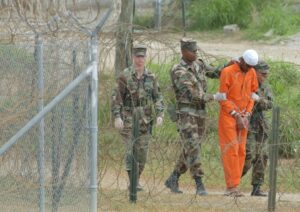
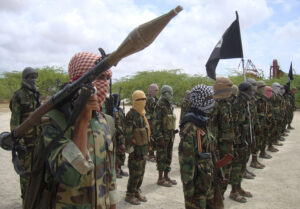
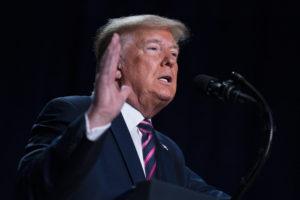
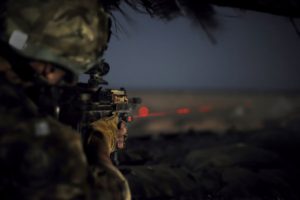
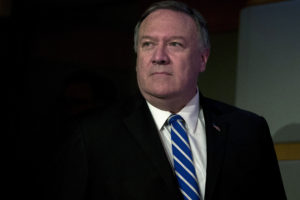
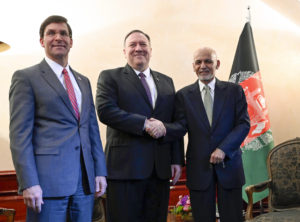


You need to be a supporter to comment.
There are currently no responses to this article.
Be the first to respond.